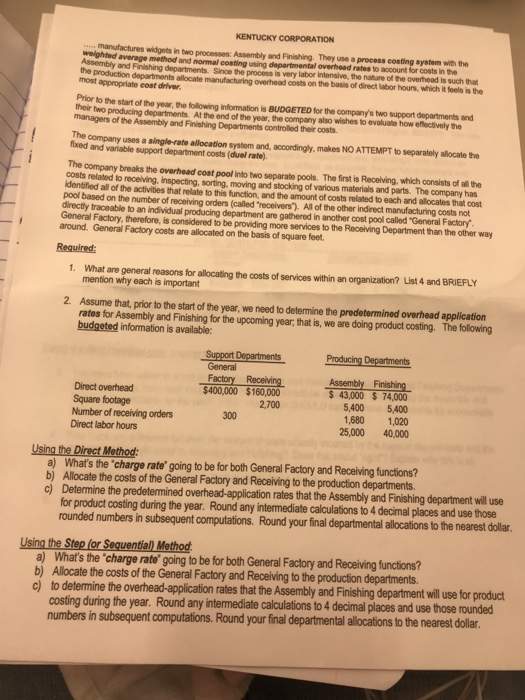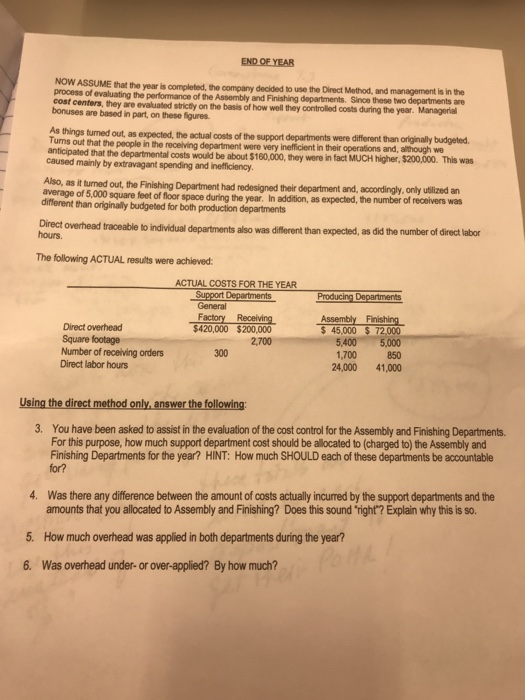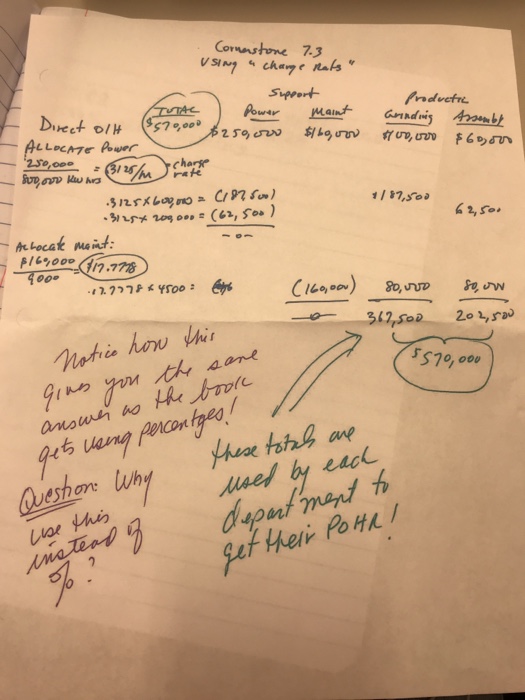KENTUCKY CORPORATION manufactures widgets in two processes: Assembly and Finishing. They use a process costing system with the weighted average method and normal costing using departmental overbead rates to account for costs in the Assembly and Finishing departments. Since the process is very labor intensive, the nature of the overhead is such that the production departments allocate manufacturing overhead costs on the basis of direct labor hours, which it feels is the most appropriate cost driver Prior to the start of the year, the following information is BUDGETED for the company's two support departments and ineir two producing departments At the end of the year, the company also wishes to evaluate how effectively the managers of the Assembly and Finishing Departments controlled their costs. The company uses a single-rate allocation system and, accordingly, makes NO ATTEMPT to separately allocate the fixed and variable support department costs (duel rate). The company breaks the overhead cost pool into two separate pools. The first is Receiiving, which consists of all the costs related to recelving, inspecting, sorting, moving and stocking of various materials and parts. The company has dentified all of the activities that relate to this function, and the amount of costs related to each and allocates that cost pool based on the number of receiving orders (called "receivers). All of the other indirect manufacturing costs not directly traceable to an individual producing department are gathered in another cost pool called "General Factory General Factory, therefore, is considered to be providing more services to the Receiving Department than the other way around. General Factory costs are allocated on the basis of square feet Required: What are general reasons for allocating the costs of services within an organization? List 4 and BRIEFLY mention 1. each s important 2. Assume that, prior to the start of the year, we need to determine the predetermined overhead application rates for Assembly and Finishing for the upcoming year, that is, we are doing product costing. The following budgeted information is available: Producing Departments $ 43,000 74,000 5,400 5,400 1,680 1,020 25,000 40,000 $400,000 $160,000 2,700 Direct overhead Square footage Number of receiving orders Direct labor hours 300 Using the Direct Method: a) What's the charge rate' going to be for both General Factory and Receiving functions? b) Allocate the costs of the General Factory and Receiving to the production departments c) Determine the predetermined overhead-application rates that the Assembly and Finishing department will use for product costing during the year. Round any intermediate calculations to 4 decimal places and use those rounded numbers in subsequent computations. Round your final departmental allocations to the nearest dollar. Using the Step (or Sequential) Method a) What's the charge rate' going to be for both General Factory and Receiving functions? b) Allocate the costs of the General Factory and Receiving to the production departments c) to determine the overhead application rates that the Assembly and Finishing department will use for product costing during the year. Round any intermediate calculations to 4 decimal places and use those rounded numbers in subsequent computations. Round your final departmental allocations to the nearest dollar KENTUCKY CORPORATION manufactures widgets in two processes: Assembly and Finishing. They use a process costing system with the weighted average method and normal costing using departmental overbead rates to account for costs in the Assembly and Finishing departments. Since the process is very labor intensive, the nature of the overhead is such that the production departments allocate manufacturing overhead costs on the basis of direct labor hours, which it feels is the most appropriate cost driver Prior to the start of the year, the following information is BUDGETED for the company's two support departments and ineir two producing departments At the end of the year, the company also wishes to evaluate how effectively the managers of the Assembly and Finishing Departments controlled their costs. The company uses a single-rate allocation system and, accordingly, makes NO ATTEMPT to separately allocate the fixed and variable support department costs (duel rate). The company breaks the overhead cost pool into two separate pools. The first is Receiiving, which consists of all the costs related to recelving, inspecting, sorting, moving and stocking of various materials and parts. The company has dentified all of the activities that relate to this function, and the amount of costs related to each and allocates that cost pool based on the number of receiving orders (called "receivers). All of the other indirect manufacturing costs not directly traceable to an individual producing department are gathered in another cost pool called "General Factory General Factory, therefore, is considered to be providing more services to the Receiving Department than the other way around. General Factory costs are allocated on the basis of square feet Required: What are general reasons for allocating the costs of services within an organization? List 4 and BRIEFLY mention 1. each s important 2. Assume that, prior to the start of the year, we need to determine the predetermined overhead application rates for Assembly and Finishing for the upcoming year, that is, we are doing product costing. The following budgeted information is available: Producing Departments $ 43,000 74,000 5,400 5,400 1,680 1,020 25,000 40,000 $400,000 $160,000 2,700 Direct overhead Square footage Number of receiving orders Direct labor hours 300 Using the Direct Method: a) What's the charge rate' going to be for both General Factory and Receiving functions? b) Allocate the costs of the General Factory and Receiving to the production departments c) Determine the predetermined overhead-application rates that the Assembly and Finishing department will use for product costing during the year. Round any intermediate calculations to 4 decimal places and use those rounded numbers in subsequent computations. Round your final departmental allocations to the nearest dollar. Using the Step (or Sequential) Method a) What's the charge rate' going to be for both General Factory and Receiving functions? b) Allocate the costs of the General Factory and Receiving to the production departments c) to determine the overhead application rates that the Assembly and Finishing department will use for product costing during the year. Round any intermediate calculations to 4 decimal places and use those rounded numbers in subsequent computations. Round your final departmental allocations to the nearest dollar









